Red light therapy may be your missing piece. Unlike ice packs or pain pills, red and near-infrared wavelengths penetrate deep into the joint to calm inflammation at the source. It’s non-invasive, fast-acting, and safe enough to use daily, right from home.
Here’s why red light therapy stands out:
-
Targets inflammation in the bursa, not just surface pain
-
Stimulates cellular repair by increasing ATP production
-
Enhances blood flow and oxygen delivery to stiff tissue
-
Can reduce swelling and improve mobility within 1–2 weeks
-
Works with your body’s healing process, not against it
-
No meds, no downtime, no side effects
At Lumara, we’ve engineered devices specifically for this kind of deep-joint recovery. Whether you're newly diagnosed or have battled chronic bursitis for months, our clinical-grade pads and panels give you the power to heal, without clinic visits or guesswork.
Keep reading to learn how red light therapy works, what wavelengths matter most, and why your hip pain doesn’t stand a chance with the right tool.
Let’s dive in.
How Red Light Therapy Helps
Light Wavelengths That Reach the Hip
Hip bursitis involves inflamed structures several centimeters beneath the skin. Not every red light device reaches that far. To have any effect on the bursa itself, the light needs to pass through soft tissue with minimal loss in power. This is why specific wavelengths matter.
660nm red light reaches the dermis and underlying capillaries, helping with blood flow and early inflammation. Deeper structures respond better to 830nm and 940nm near-infrared light, which can penetrate through muscle to the joint capsule and bursa.
The Lumara Pad stacks all three wavelengths into one flexible treatment surface. It wraps comfortably around the hip and stays in contact with the skin, reducing the loss of light energy that occurs with rigid panels or distant lamps. Most users lie on their side during sessions to allow gravity and body weight to aid surface contact.
Cellular Response: ATP, Inflammation, and Repair
Photo Source -> Photobiomodulation, Underlying Mechanism and Clinical Applications
Red light therapy helps damaged tissue generate energy more efficiently. The light stimulates mitochondria, the cell’s energy producers, to crank out more ATP. This increase in energy allows inflamed tissue to complete the healing cycle faster, with less oxidative stress in the process.
Several studies have documented these effects in soft tissue recovery. In particular, one review on low-level light therapy (LLLT) emphasized how red light reduces edema, modulates pain signals, and encourages regenerative activity in musculoskeletal structures.
This matters for bursitis. The swollen bursa often creates mechanical pain, but inflammation is the true driver of dysfunction. Red light therapy doesn't block pain chemically, it helps quiet the inflammatory process itself. As blood flow improves and inflammation calms, hip movement becomes easier and pain becomes less frequent.
Products like the Illuminate Red Panel use tight LED spacing to ensure full surface saturation, so no part of the hip joint is under-treated. Poor coverage from spaced-out LEDs, known as “leopard spotting”, can lead to inconsistent results. Devices built for clinical performance are engineered to deliver uniform energy every time.
Setting Up Treatment at Home
Choosing the Right Device
Red light therapy only works when the right wavelengths reach the affected area with enough energy. A panel that looks powerful isn’t useful unless it delivers a clinical dose to the tissue underneath the skin. Specs like Joules per square centimeter (J/cm²), irradiance (mW/cm²), and wavelength range should all be listed. If they’re not, don’t expect results.
For hip bursitis, surface-level red light (like 660nm alone) doesn’t travel deep enough. The joint and surrounding muscle require deeper penetration, which is where near-infrared (830nm and 940nm) becomes essential. Multi-wavelength devices that target multiple depths perform better because they stimulate blood flow near the skin while also energizing deep tissue repair.
The Lumara Pad was designed with this specific challenge in mind. It uses a combination of 635, 830, and 940nm light in a flexible, skin-contact format. This setup eliminates light loss from reflection and air gaps, helping energy move into the joint line more efficiently than rigid panels or hand-held wands.
In clinical literature, red light therapy has shown measurable benefits for musculoskeletal pain when applied with accurate dosing and repeated sessions. The NIH-supported study on LLLT confirmed its ability to reduce inflammation, promote healing, and decrease pain in orthopedic use cases, especially when deep tissue absorption was achieved. Products that deliver these same parameters at home remove the barrier of needing a clinical setting for every session.
Recommended Dosage and Treatment Schedule
Effective treatment isn’t about running the device once or twice and hoping for lasting change. Tissue remodeling takes time, and red light supports that process by fueling the body’s repair mechanisms daily.
For hip bursitis:
-
Energy target per session: 5 J/cm²
-
Treatment time: 10–20 minutes depending on irradiance
-
Frequency: 5–7 sessions per week during flare-ups, tapering to 3× weekly as symptoms improve
People recovering from chronic bursitis often begin to feel movement improvement after two weeks, though consistent use over a 6–8 week period tends to offer stronger results. Devices like the Illuminate Red Panel deliver 5 J/cm² in 5 minutes, making it practical for people who need faster sessions or want to build red light into a daily routine.
Consistency matters more than power alone. A strong device sitting on a shelf won’t improve recovery. A manageable plan built into your day makes it easier to stay the course and let the therapy work.
Skin Contact and Positioning Tips
Direct Contact Maximizes Light Delivery
Red and near-infrared light lose strength quickly as they pass through layers of tissue. Any distance between your skin and the device, clothes, loose positioning, or reflective angles, reduces that energy. For joint-focused therapy like bursitis, full contact means better outcomes.
Panels should be placed as close to the skin as safely possible. For flat surfaces like the outer hip, contact pads work especially well. The Lumara Pad conforms to the curve of the body and stays in place without shifting, letting the LEDs sit directly against the tissue that needs treatment.
Lying on your side with the device under your hip increases contact. Use a towel under the device for stabilization if needed, but avoid thick fabrics between the LEDs and your skin. The goal is uninterrupted light transmission into the affected joint.
Setup Tips for Maximum Effectiveness
-
Remove clothing or compression wear from the treatment area
-
Use a mirror to check LED alignment if treating solo
-
Anchor the pad gently with body weight or a light wrap, avoid tight binding that may block heat or airflow
-
If using a panel, position it within 1–2 inches of the skin, perpendicular to the hip line
The Illuminate Red Panel was built with dense 6mm LED spacing to prevent “leopard spots”, the untreated gaps common in generic devices. Even spacing allows light to reach every square centimeter of the treatment zone, which matters for bursitis recovery. Missed areas stay inflamed, slowing the process.
People often give up on therapy because they think it isn’t working, when in fact the coverage or contact wasn’t consistent. A pad or panel designed for hip and joint use will prevent that frustration.
Red Light Therapy vs. Other Hip Pain Treatments

Comparing Short-Term Relief and Long-Term Recovery
Hip bursitis treatment often starts with anti-inflammatories, steroid injections, or rest. While these approaches can reduce pain temporarily, they don’t change the underlying cycle of inflammation and tissue irritation. Steroid injections carry risk with repeated use, especially for older adults, while NSAIDs can cause GI issues and kidney strain when used regularly.
Red light therapy avoids these trade-offs. Instead of suppressing inflammation chemically, it supports the body’s own resolution mechanisms. This process takes longer to build but doesn’t rely on blocking pain signals. It encourages recovery from the inside out.
The Illuminate Red Panel delivers 5 J/cm² per session, a benchmark often referenced in clinical settings. A consistent dose like this has been associated with reduced swelling and improved tissue elasticity, two key factors in hip bursitis flare-ups.
Over a multi-week period, red light can help loosen stiff fascia, decrease pain sensitivity, and make physical therapy more effective. These benefits come without medication side effects or limits on use frequency.
Surgical and Invasive Options
When hip bursitis doesn’t respond to conservative care, physicians may consider procedures like bursa aspiration or surgical removal. These are rare and usually reserved for chronic, unresolved cases. Even after surgery, patients typically face a long rehab window, and some still experience lingering inflammation.
In contrast, red light therapy can be integrated during all recovery phases. It doesn’t interfere with medications or PT, and it doesn’t require downtime. It offers an option that fits alongside other strategies, or works solo for those trying to delay, or avoid, more invasive interventions.
Devices like the Lumara Pad were built to bridge the gap between passive rest and clinical care. When used consistently, they help restore range of motion without restarting pain cycles or relying on ice packs and pills.
Which Red Light Product Is Best for Hip Bursitis?
Surface Area and Coverage
Hip bursitis affects a broad and curved surface, so narrow-beam or pinpoint devices struggle to cover it properly. A wide treatment field with uniform LED spacing ensures the entire bursa and surrounding tissue receives energy.
The Illuminate Red Panel was engineered with 6mm LED spacing to eliminate “leopard spots” and deliver full surface saturation. It’s ideal for users treating both hips, or using red light therapy on multiple joints.
However, panels require precise positioning to maintain contact with the skin. For individuals who want to lie down during sessions or need hands-free operation, flexible pads work better.
Flexible Devices for Daily Recovery
The Lumara Pad offers full-hip coverage with zero setup friction. It wraps directly around the outer hip, holds position naturally, and stays flush throughout the session. Its 3-wavelength stack, 635, 830, and 940nm, means energy reaches both surface-level inflammation and deeper tissue where the bursa sits.
For users focused on smaller joints, or as a supplement to hip treatment, the VISO LED Mask is another option. While it’s primarily designed for facial skin, it shares the same clinical standards as Lumara’s larger pads and panels. It reflects the brand’s commitment to precise energy delivery and zero performance fluff.
Each device has a role, but for hip bursitis, full-contact flexibility combined with high-output light makes the Lumara Pad the most practical daily-use solution.
When to Expect Results + How to Track Progress

Recovery Timeline and Symptom Shifts
Red light therapy builds over time. It supports the body’s healing response rather than forcing an external one. For hip bursitis, some users begin to notice reduced stiffness after 7–10 sessions. Swelling and irritation often taper off in the second week. However, sustained relief usually takes 4–6 weeks of consistent use.
Progress tends to follow a pattern:
-
Week 1–2: Reduced morning stiffness, less pain when shifting positions
-
Week 3–4: More range of motion, fewer nighttime flare-ups
-
Week 5–6: Less dependency on ice, improved daily mobility
Each body reacts differently based on inflammation levels, tissue damage, and baseline circulation. That’s why staying consistent matters more than pushing high intensity sessions early.
The Lumara Pad was created to make daily use feel manageable. It doesn’t require setup time, sits flat against the hip, and lets users treat while watching TV or resting. Features like auto-timers and flexible fit keep it practical for long-haul recovery.
Clinician vs. At-Home Use
Why the Gap Exists
Clinics often charge per session, making daily treatment cost-prohibitive. Most in-office setups are limited to one or two appointments a week. That pace might help with maintenance, but not for building momentum during flare-ups.
Studies like this one point to cumulative dosing as the key to musculoskeletal pain relief. LLLT’s effects stack session by session, particularly when applied in intervals that mimic the body’s own repair cycle. A device that collects dust between appointments can’t offer that rhythm.
At-home red light bridges that gap. People recovering from bursitis can create a routine that fits their body’s needs instead of scheduling around clinic hours. Results depend on consistency, and that’s easier when the device is already on your nightstand.
Engineering for Clinical Power at Home
Lumara systems were developed with clinical specs and home use in mind. Devices like the VISO LED Mask follow the same performance standard as professional units, precise LED spacing, true wavelength output, and high energy density per square centimeter.
The Lumara Pad uses 635, 830, and 940nm in one layer to target all tissue depths. This kind of depth coordination is what allows the therapy to reach the joint space where bursitis occurs.
Users aren’t trading down by moving their therapy home. With the right device, they gain flexibility and stay in control of their healing timeline.
How the Research Supports Red Light Therapy for Hip Bursitis
Anti-Inflammatory Effects Without Medication
Clinical research has confirmed that light therapy can help lower inflammation, reduce pain, and accelerate soft tissue repair. In a widely cited review on musculoskeletal pain, LLLT was found to reduce swelling and promote recovery in conditions like bursitis, without relying on pharmaceuticals or invasive intervention.
This aligns with user outcomes when using devices like the Illuminate Red Panel or Lumara Pad on a consistent basis. Instead of numbing the pain, light therapy supports mitochondrial function, which drives healing across tissue layers.
Because hip bursitis tends to flare under pressure, therapies that work through light penetration, without needing physical manipulation, can be used during painful phases when stretching or massage would aggravate the joint.
Targeting Deeper Tissue with Precision
The hip bursa sits below layers of muscle and connective tissue. Devices with limited penetration won’t reach this layer, even if the surface feels warm. That’s where depth coordination matters. The study cited above confirms that certain wavelengths, specifically in the 800–900nm range, demonstrate deeper reach and therapeutic impact when dosed correctly.
The Lumara Pad was built with this profile in mind, combining 635nm, 830nm, and 940nm to cover both superficial and deep inflammation. It delivers 5–20 minutes of energy-dense treatment across the entire surface without cold spots or optical drop-off.
Most budget red light options can’t do this. They lack wavelength targeting and fall short of clinical-grade irradiance. That’s why many people try red light, see no changes, and walk away disappointed. When built properly, the results line up with what the literature shows, and hips respond.
If you’re ready to treat your bursitis with science-backed depth and precision, the Lumara Pad is built for exactly this kind of joint-level recovery.
FAQ
How often should I use red light therapy for hip bursitis?
For the hip joint, frequency matters more than intensity. Daily sessions are ideal for building up a therapeutic response. Most users start with 10–15 minutes once or twice a day. The Lumara Pad includes timer controls so you can build this into your morning or evening routine without overdoing it.
What’s the best wavelength for targeting hip bursitis?
Wavelengths in the red and near-infrared spectrum, specifically 635nm, 830nm, and 940nm, have shown the most reliable tissue penetration for musculoskeletal inflammation. This is supported in clinical studies that highlight their role in reducing swelling and encouraging cellular repair. The Illuminate Red Panel delivers 660nm red light efficiently across larger areas like the hip and glute.
Can red light therapy replace steroid injections?
It depends on the severity and stage of the condition. For mild to moderate cases, consistent red light therapy can offer meaningful relief without medication. In more advanced scenarios, it may be used alongside clinical treatment to reduce dependency on steroids or post-injection inflammation. Devices like the Lumara Pad help support that balance with deeper wavelength targeting.
Is red light therapy safe to use near the hip joint daily?
Yes, when used as directed. Devices engineered for home use like the VISO LED Mask and Illuminate Red Panel maintain a consistent dose profile and avoid overheating. For deep joint treatment, the Lumara Pad remains the most body-specific option, with flexible application and controlled output.
Can I use red light therapy if I’m already seeing a physical therapist?
Absolutely. Red light therapy can be layered into an existing rehab plan without interference. Some clinics already use it post-manual therapy to calm tissue response. Using it at home before or after PT sessions can help reduce soreness and support the overall goal of joint stabilization.
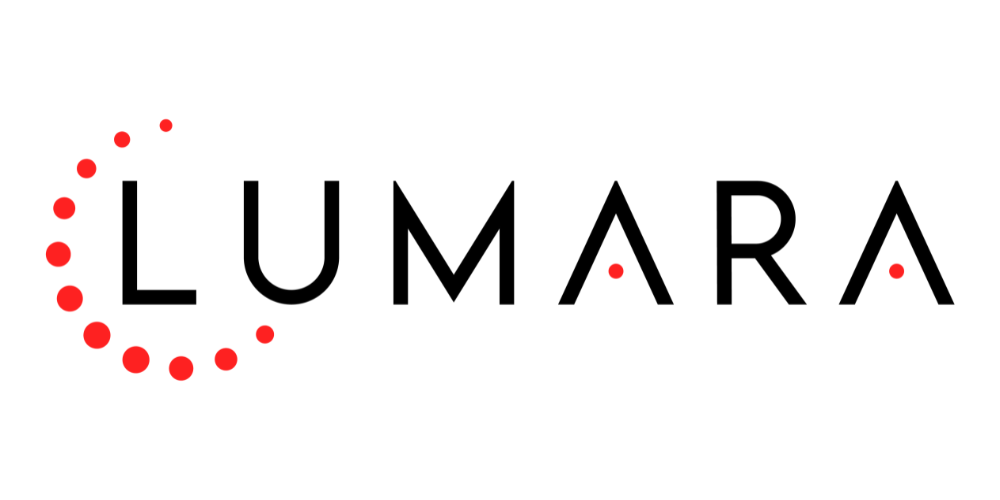
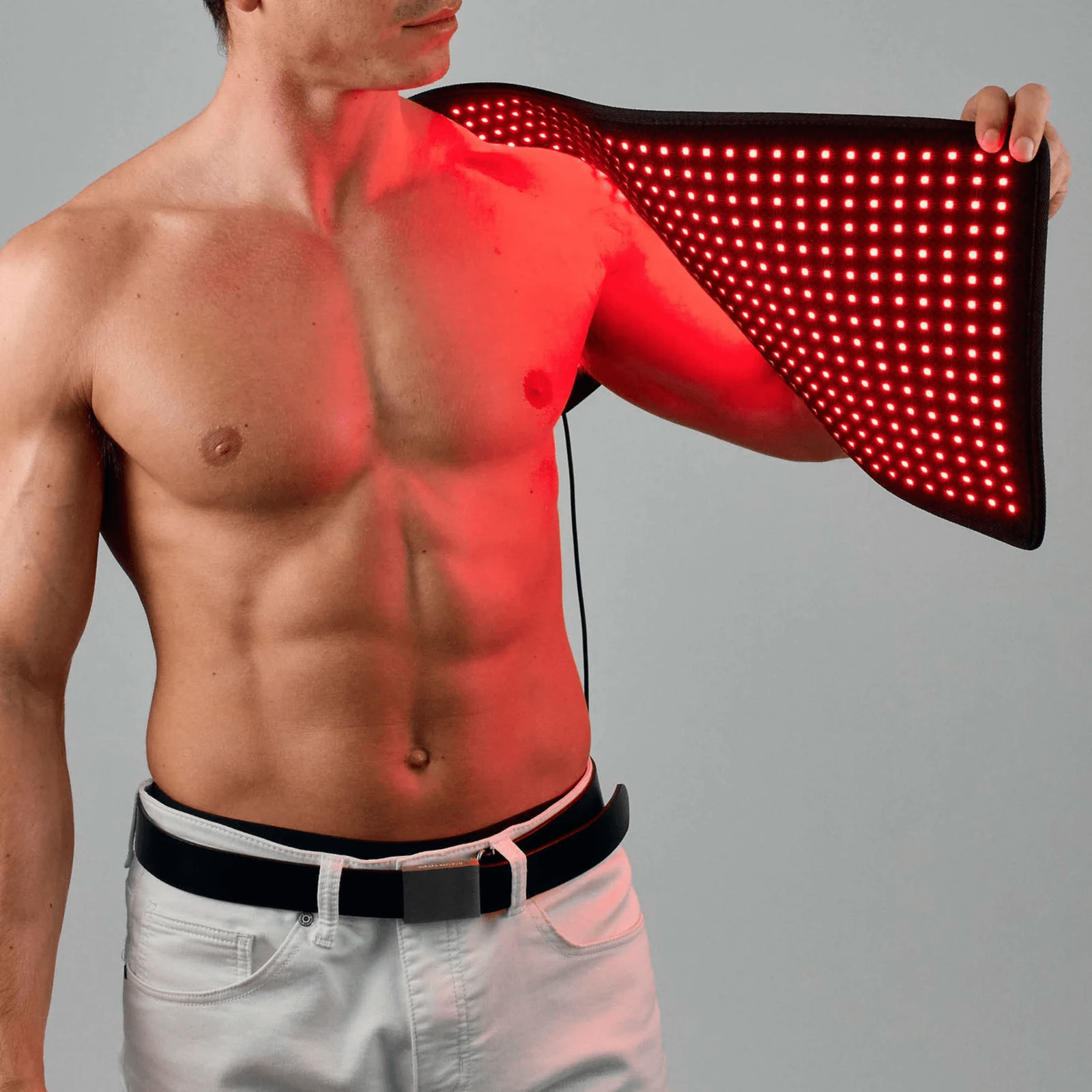
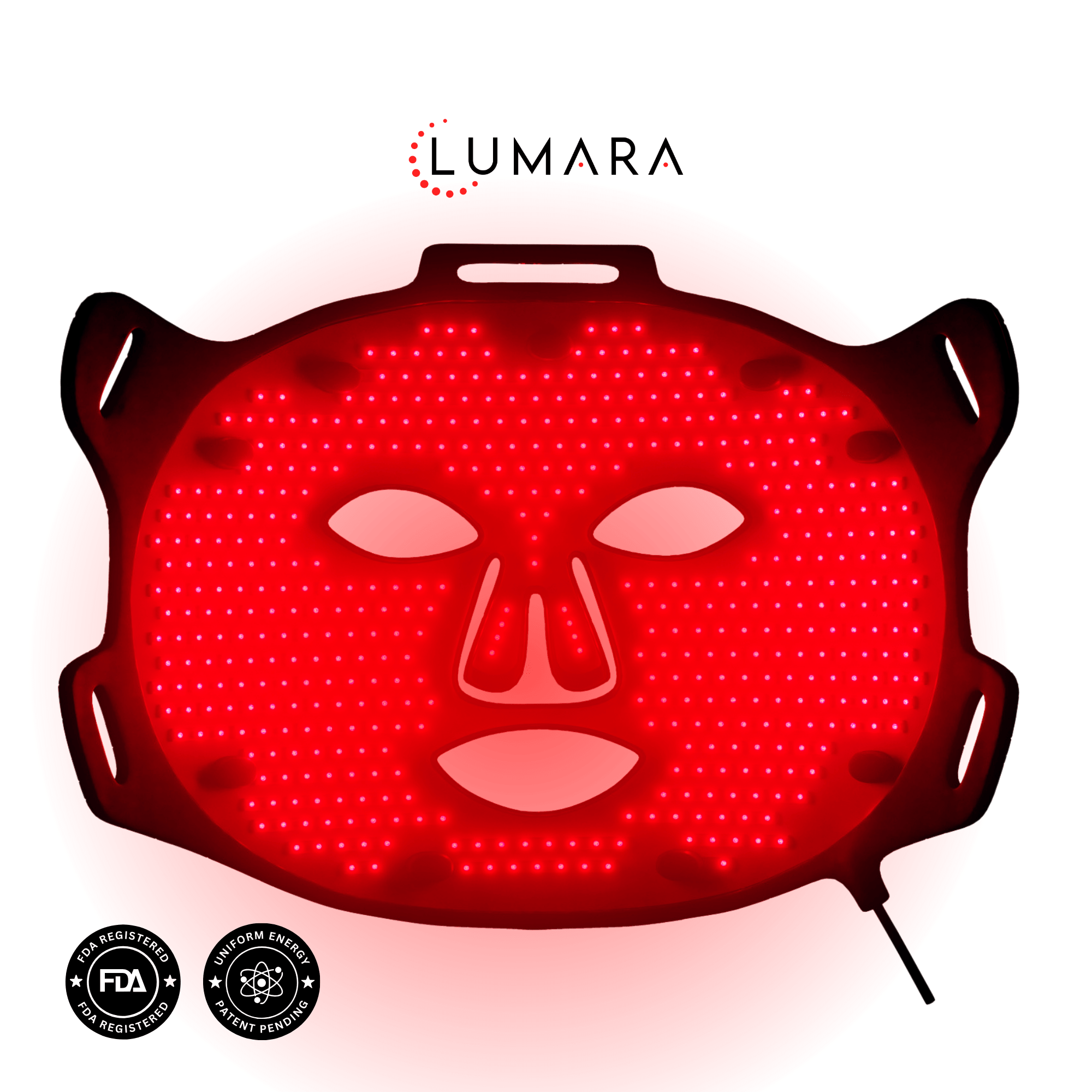
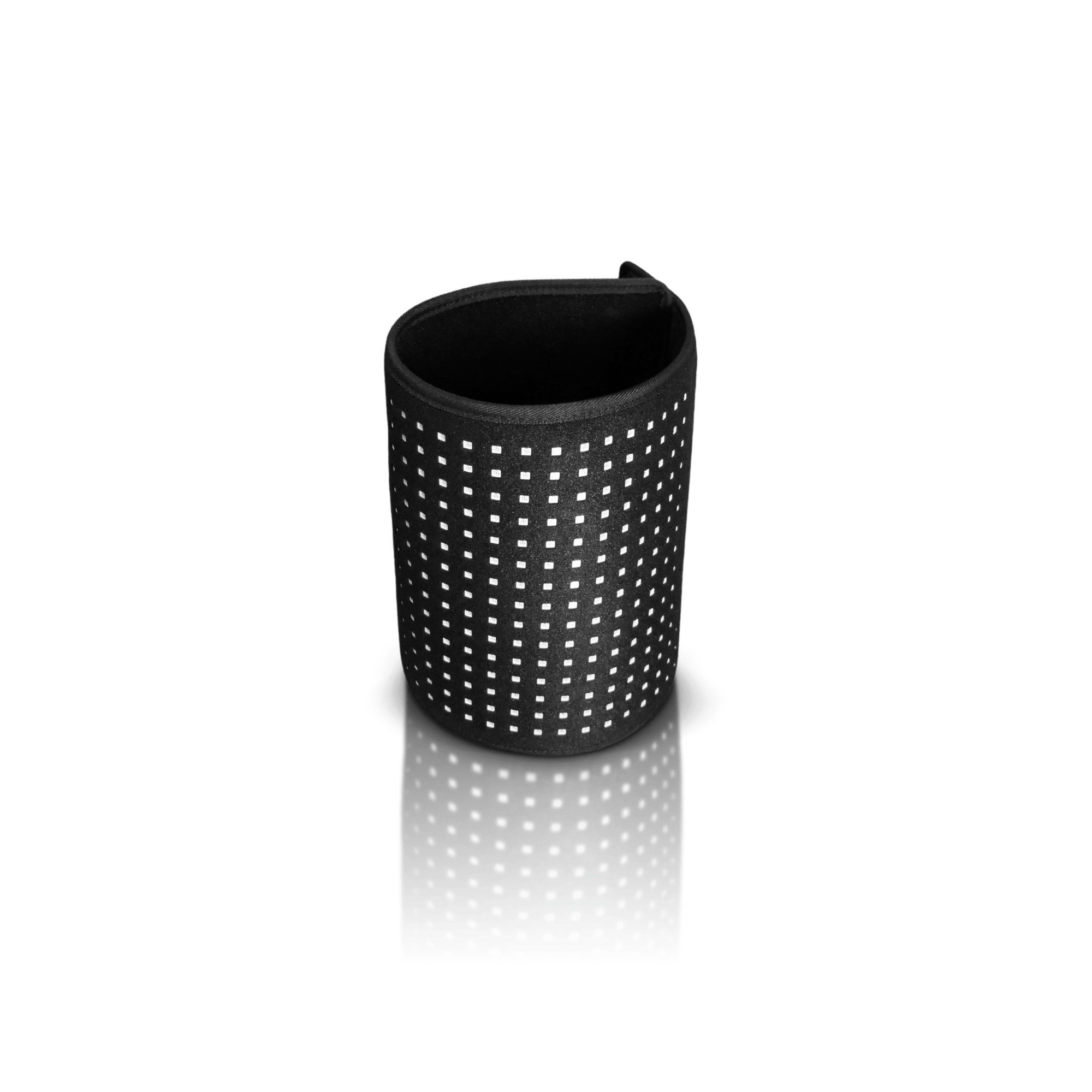
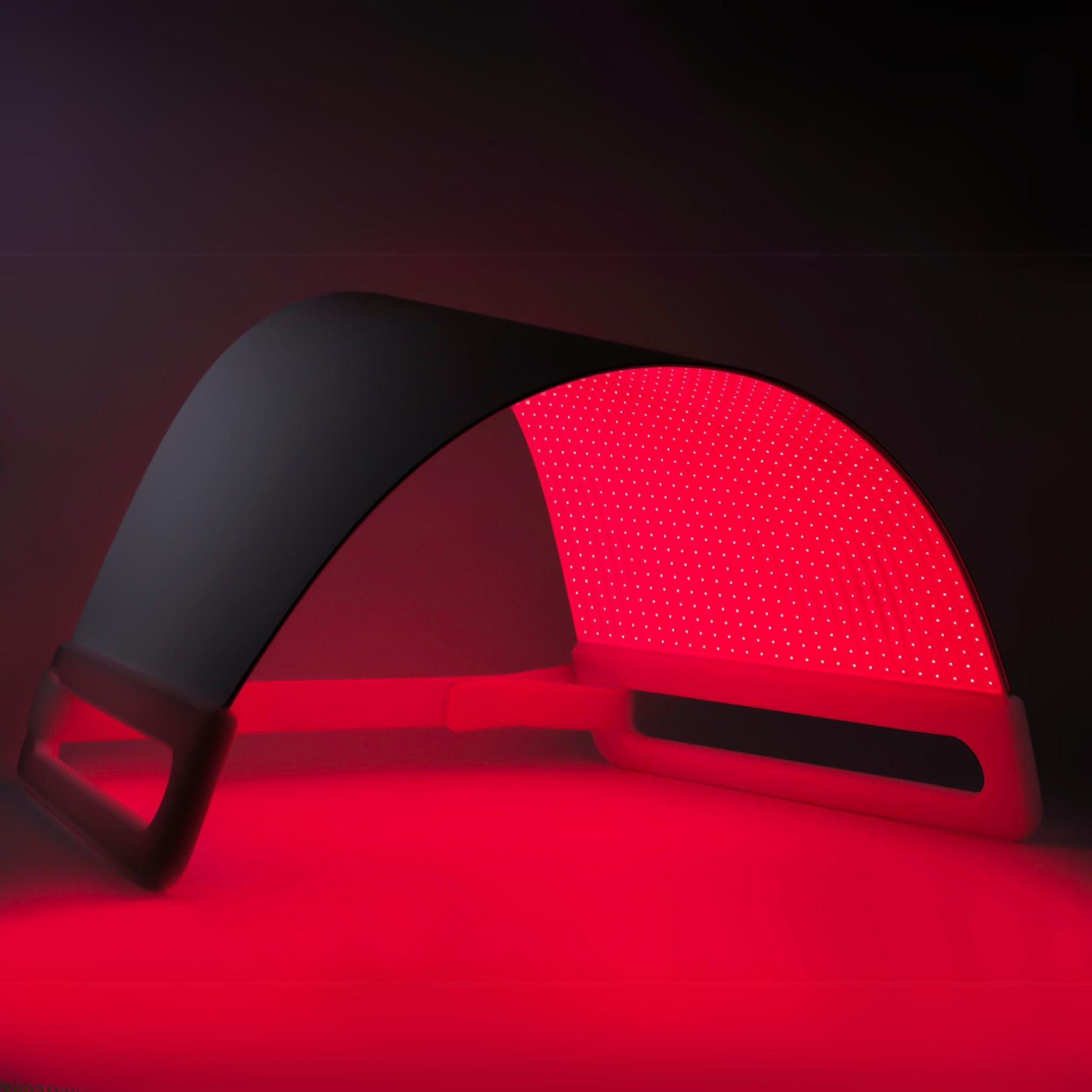
Share:
Red Light Therapy and Mitochondria: Energy Backed by Science
Red Light Therapy and Mitochondria: Energy Backed by Science